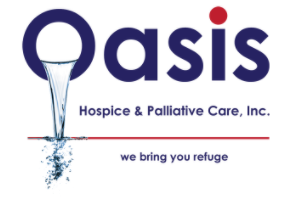Living with the chronic obstructive pulmonary disease can be challenging, particularly in the latter stages of the disease. We understand that it can be equally difficult for caregivers, but you don’t have to face the challenges alone.
Hospice and palliative care provide an additional layer of support for managing COPD symptoms. They improve patients’ and families’ quality of life by addressing social, spiritual, and practical issues.
End-stage COPD flare-ups can result in frequent hospitalizations and concerns about the future. During this time of need, patients and their families are frequently under-supported.
REDUCING COPD SYMPTOMS
Breathing difficulty
Patients with end-stage COPD frequently tell us that extreme dyspnea, or shortness of breath, is the source of their greatest distress and poor quality of life. We collaborate with doctors to manage dyspnea by:
- Medications
- The use of oxygen therapy
- Exercising your breathing
- Techniques for relaxation
- Positioning of the body while sitting or sleeping.
- Caregivers can get help and education from the organizations listed below.
Getting rid of anxiety and depression
Extreme shortness of breath can be fatal for people with COPD. Symptoms may prevent them from enjoying the simple pleasures of life, leading to social isolation. Many patients who have trouble breathing are also anxious. There are effective treatments available to relieve these symptoms.
Pain management
Patients with COPD have good and bad days, but pain medication works best when taken on a regular basis to keep pain at bay. Palliative care and hospice providers have a lot of experience dealing with pain. They are trained to provide the correct medications, at the correct dose, at the correct time.
COPD PALLIATIVE CARE
You may believe that palliative care is only for people who are nearing the end of their lives. This is not correct. Palliative care allows you to continue taking your medications and receiving therapy.
Palliative care also assists you in setting goals for end-of-life care. Accepting the limitations of COPD treatment is difficult. Although there is no cure for COPD, families all too often miss out on the benefits of early comfort care because they wait until a medical crisis occurs. Palliative care should begin as soon as a life-threatening diagnosis is made.
HOSPICE
Patients who choose hospice usually have advanced disease and do not want to undergo unnecessary or aggressive medical treatments. Their desire is to die on their own terms, in the privacy of their own home. At Essential Home Health Care, we give patients and families the ability to make end-of-life decisions.
End-of-life care for patients and their families:
- Care to reduce distressing episodes and unnecessary hospitalizations.
- Managing depression and anxiety to a level that allows you to achieve your goals.
- Nurses are available 24 hours a day, seven days a week.
- Preparation for an emergency.
- Comfort care can be provided at home, in a nursing home, or wherever the patient resides.
- Family caregivers may benefit from respite care (relief).
- Personal care and homemaker services provided by hospice aides.
- Hospice social workers will assist with care transitions.
- Spiritual care and support is provided by a hospice chaplain.
- Companionship and support are provided by hospice volunteers.
HOSPICE OR PALLIATIVE CARE?
Hospice and palliative care both provide pain and symptom relief for COPD patients. Both can address a patient’s mental, social, and spiritual needs. Hospice is, in fact, a type of palliative care provided during the final stages of life.
Hospice care is only available to Medicare patients with a life expectancy of six months or less. A clinical decision about life expectancy can only be made by a doctor. It is critical for patients to communicate their treatment goals, especially during times of frequent hospitalization or in palliative care.
- Palliative care vs. hospice care
- The Advantages of Palliative Care
- Guidelines for Hospice Eligibility for COPD and Other Lung Diseases
- Hospice care for people with pulmonary fibrosis
- COPD information from the American Lung Association

